How emergency alerts work
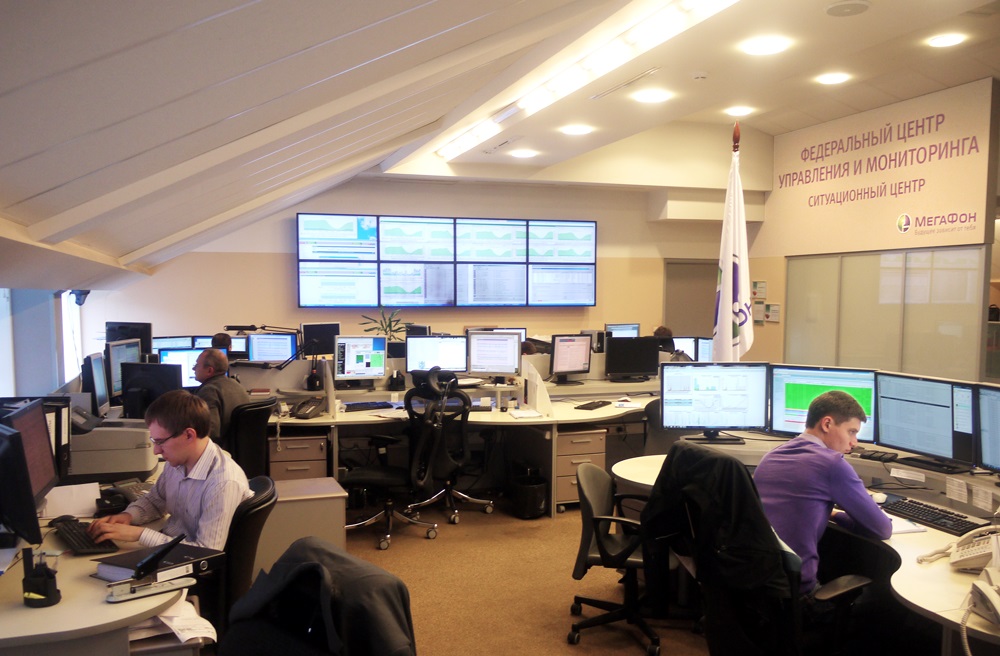
Large-scale flooding in the Far East became the topic number 1 of the beginning of autumn. This is the second catastrophic flood in two years, if we recall Krymsk. And as always in such situations, the question of alerting the population arises. MegaFon is sometimes reproached that its alarming SMS does not reach everyone and not always - however, there is a “nuance” which means that MegaFon is the only mobile operator engaged in targeted notification of the population in cooperation with the Ministry of Emergencies. How this cooperation works, by what principle messages are sent, whether it is possible to receive an SMS about an emergency with a negative account balance, which incidents have to be most often notified - I went to find out at the Federal Management and Monitoring Center (MTsUM) of MegaFon OJSC.
The Federal Center for Management and Monitoring was established in 2010, combining at the federal level the control functions that had previously been performed by the regional centers. The responsibility of the FTsUM is monitoring communication quality, evaluating network performance, monitoring line operations, collecting and consolidating MegaFon's unified technical statistics, as well as alerting subscribers about accidents and emergencies. The latter area is the result of cooperation between MegaFon and the Ministry of Emergencies.
SMS and other options for mobile notifications have never been considered by special services as the main tools for alerting the public. These remain television, radio and street speakers.
Nevertheless, the Ministry of Emergency Situations was always interested in expanding its tools, therefore, in the same 2010, when the Federal Center for the Protection of Youth was established, a cooperation agreement was concluded with the ministry.
CBC and SMS
For notification on a mobile network, the FTsUM and the Ministry of Emergency Situations resort to two methods: Cell Broadcast (CBC) and SMS distribution. In both cases, the system automatically selects all subscribers on the network within the specified MES radius.
CBC is a passive notification technology: the message “MES Info! 0030. " MegaFon has three such allocated short numbers - another 0031 and 0032. By calling this number, the subscriber listens to the full text of the message about what is happening, provided by the Ministry of Emergencies (description of the situation, necessary actions, etc.). The number of notified is the number of callers and listeners to the answering machine with information.
 It can broadcast over a vast territory, CBC is simple to provide, it allows not to overload equipment, does not cause irritation when used frequently at small emergency situations.
It can broadcast over a vast territory, CBC is simple to provide, it allows not to overload equipment, does not cause irritation when used frequently at small emergency situations.  Not all mobile phones support this technology. It works only in a 2G network, simple devices deal well with it, in smartphones the owner must set support for this function in the settings on his own. iPhone, for example, CBC does not support at all.
Not all mobile phones support this technology. It works only in a 2G network, simple devices deal well with it, in smartphones the owner must set support for this function in the settings on his own. iPhone, for example, CBC does not support at all.  Requires additional action - dial a short number to listen to the message.
Requires additional action - dial a short number to listen to the message.  Since it is used quite often (due to the frequency of natural disasters in the area), people get used to and do not pay due attention to these messages.
Since it is used quite often (due to the frequency of natural disasters in the area), people get used to and do not pay due attention to these messages. The principle of SMS distribution does not need to be explained. But this notification method has its own reasons:
 There is a sound signal, all phones accept SMS.
There is a sound signal, all phones accept SMS.  SMS mailing is more informative.
SMS mailing is more informative.  The distribution process takes some time, as the equipment sends out SMS in the order of the queue. As a rule, this does not take more than 15-20 minutes, but they can also be critical in such cases.
The distribution process takes some time, as the equipment sends out SMS in the order of the queue. As a rule, this does not take more than 15-20 minutes, but they can also be critical in such cases. Based on this, CBC is used, if necessary, to cover a large number of numbers registered in the network, and SMS is more effective over a relatively small coverage radius. The border runs through the number of one hundred thousand subscribers.
The platform sending SMS about emergency situations is in no way connected with billing, therefore, the subscriber receives a message at any balance, if his SIM-card is registered on the network within the notification radius, the phone is switched on and available.

Since 2010, the number of sent messages has been constantly growing - in 2010, about 50 thousand MegaFon subscribers were notified, in 2011 - more than half a million, in 2012 - 15 million, and over the full 9 months of 2013 more than 25 million notifications were sent.

This is especially impressive given the fact that with Cell Broadcast notification, it is precisely the calls that receive notification of subscribers. At the same time, MegaFon’s cooperation with the Ministry of Emergencies is absolutely non-commercial - the operator considers this project, in fact, as an additional information service for its subscribers.
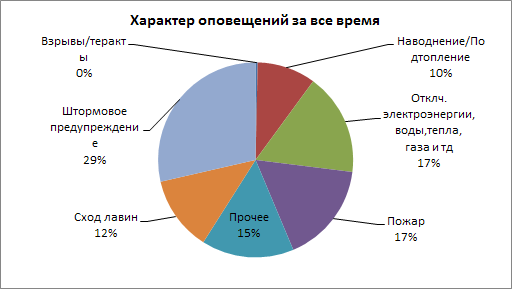

Houston, we have a problem!
The FTsUM is located in the same business center in the Savyolovskaya metro area as the metropolitan branch of MegaFon OJSC. Most of all I was interested in how much it would turn out to be like a familiar picture from films - a large hall with a bunch of employees, monitors and mandatory giant screens all over the wall.
The Holy of Holies is hidden behind an inconspicuous door with number 402:

As it turned out - yes, it looks like it, although the atmosphere is completely different: no nervousness, disturbing calls and running around. Medium size open space; everything is casual and quiet as in the office of a provincial advertising agency. However, given the specifics of the Center, this is rather good news: everything is calm in Baghdad.


What is shown on these screens is impossible for an outside observer to understand, but for the Center’s operators there is a ton of information.

The operating system is the good old Windows XP, some data is displayed in the IE7 browser.

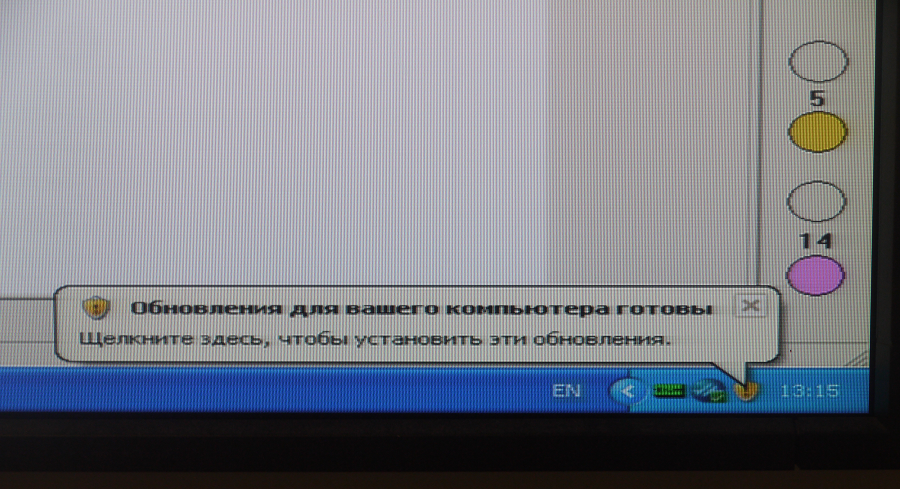
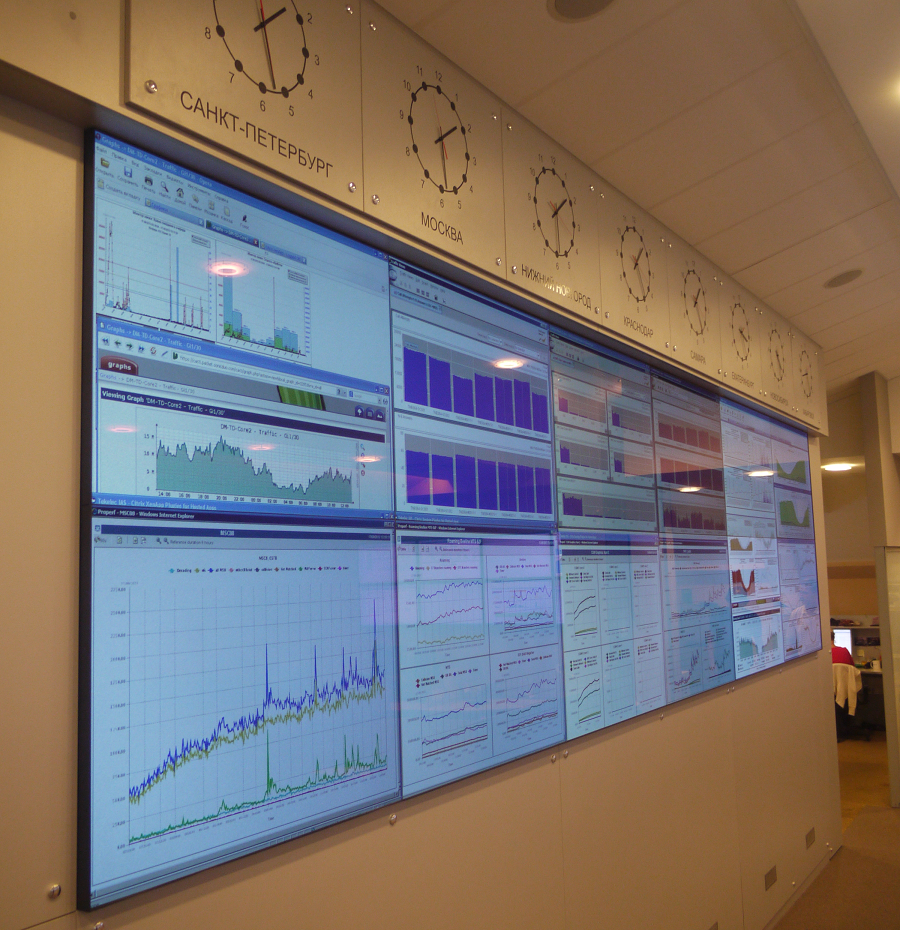
The inside of this data wall is a system of projectors hidden in cabinets.


Keep track of other operators:

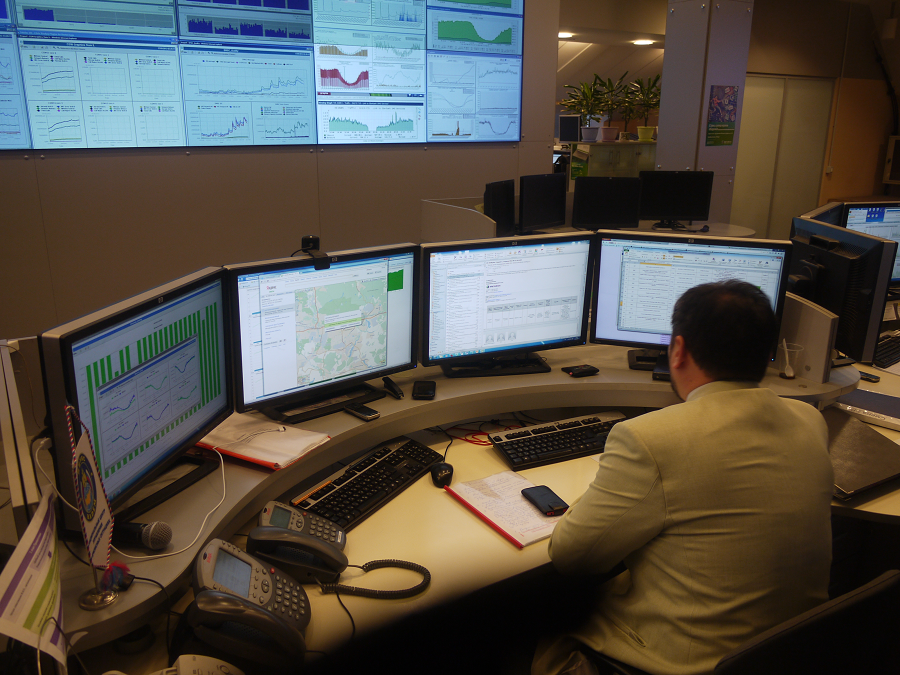
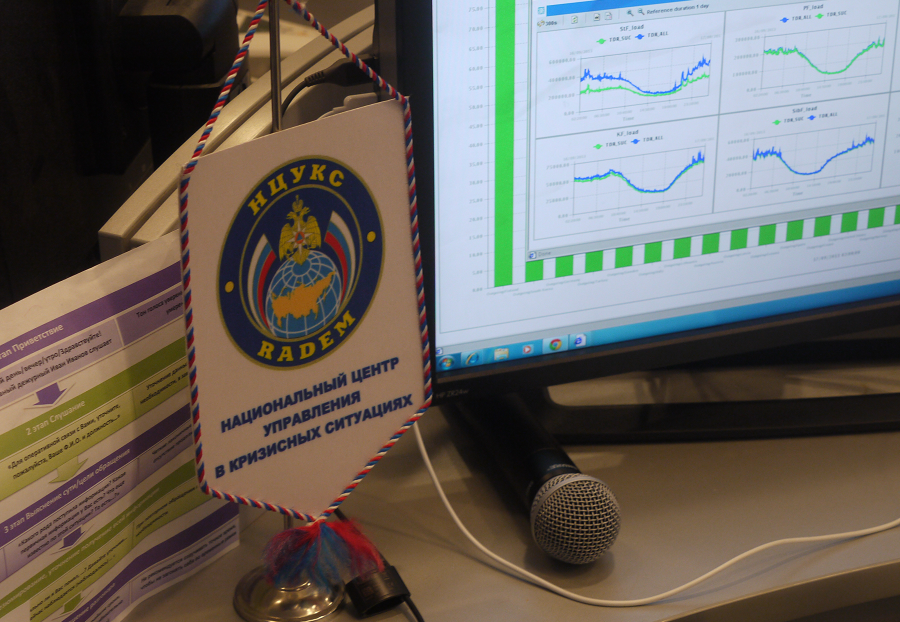
How it works
When the Ministry of Emergencies needs to send an alert, they send the coordinates of the point, the radius, within which it is necessary to notify the population, the alert text and the sound informant for those who called back to the short number to the FCM.
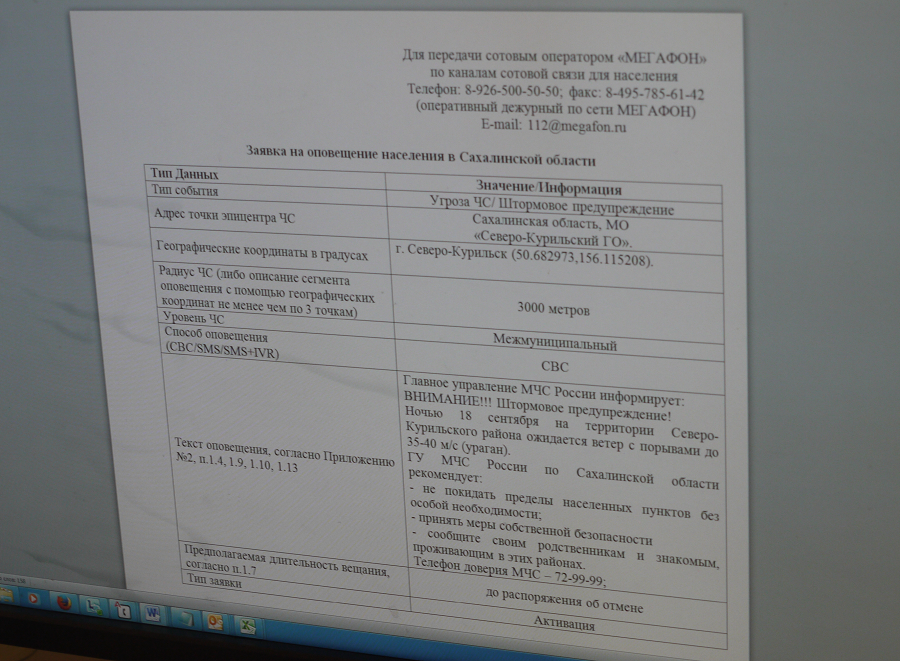
(for the curious - I uploaded a file on Yandex-disk with a real notification request in the Khabarovsk Territory).
The delivery method is a regular email:

However, prankers will not work: before sending out alerts, the FCMU requests confirmation of sending by phone. Response time - from receiving letters to sending messages - within 40 minutes for CBC mailings and 10 minutes for SMS.
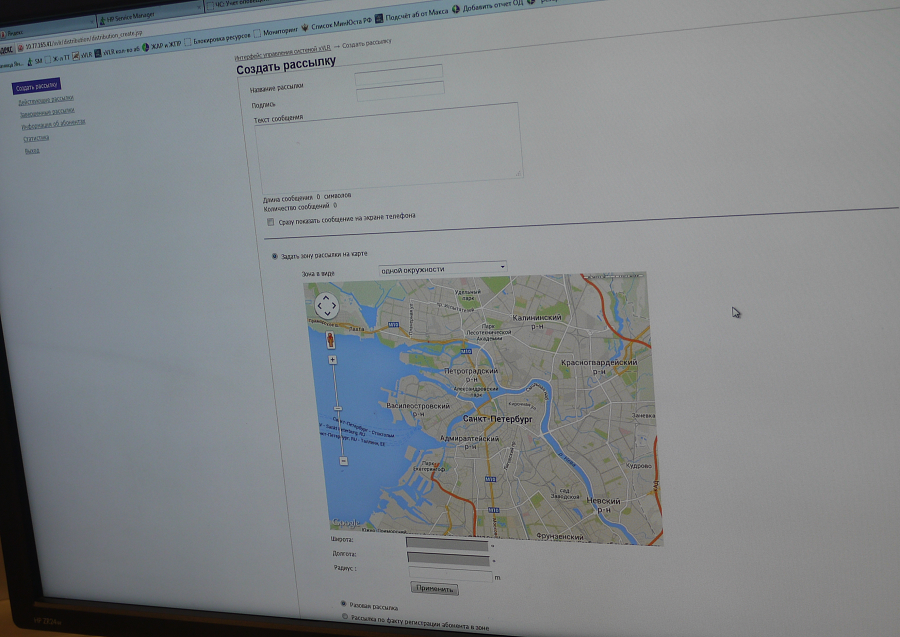
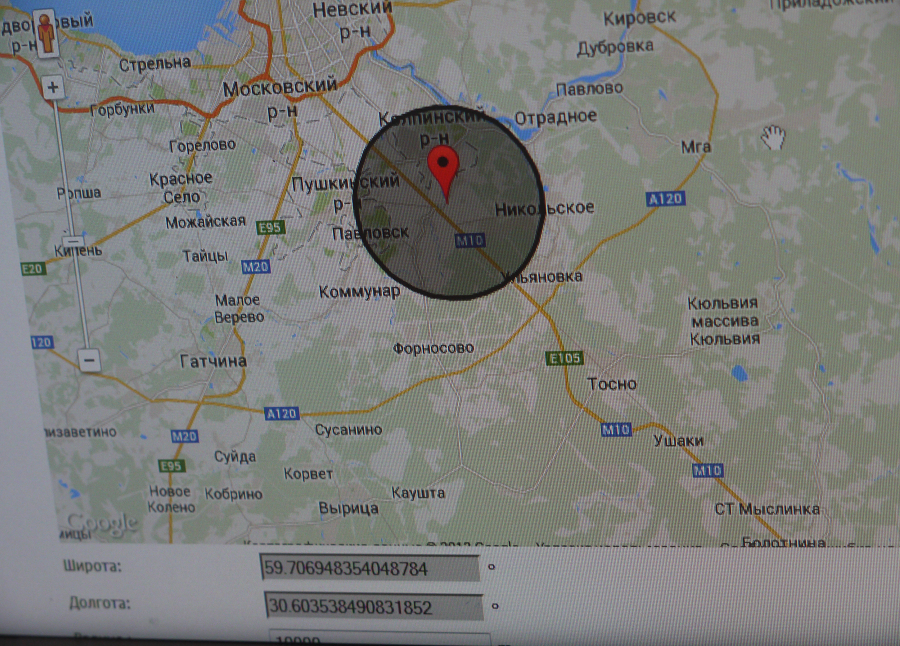
Khabarovsk flood
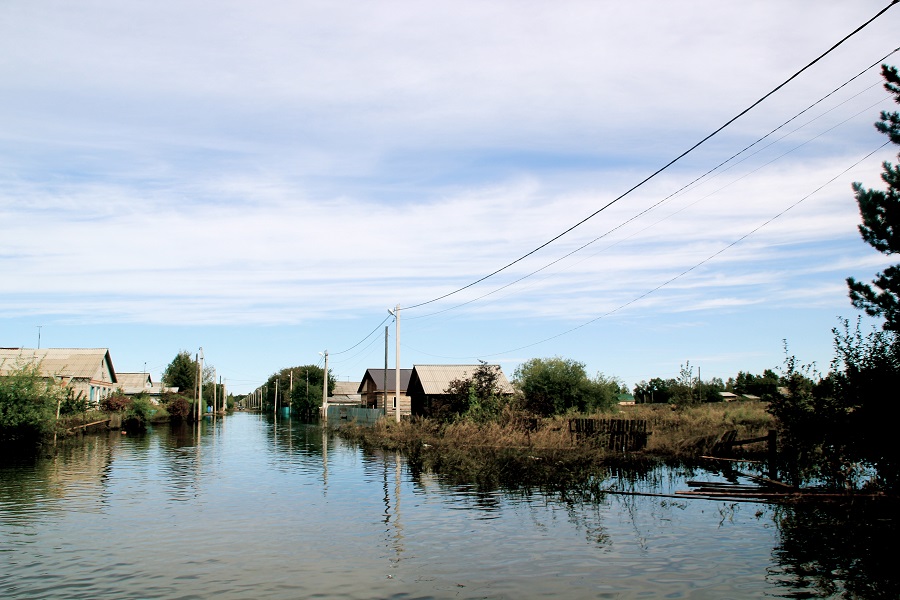
The last big situation was, of course, in connection with the flood in the Far East. The FTsUM is also responsible for the interaction of the Far Eastern branch with the Ministry of Emergencies. The first CBC alert took place on July 20 in the village of Ivanovka. Since July 28, 2013, alerts in the Amur Region have become almost daily. Jewish AO began to be notified on August 8, from 9 - Khabarovsk Territory. In total, at the request of the Ministry of Emergencies, 129 mailings were made to MegaFon subscribers, covering 53428 people.

The participation of MegaFon in protecting people from the elements was not limited to this alone. The press service reports:
- Temporary accommodation points in the EAO, Amur Region, Khabarovsk kr - are provided with mobile phones, which make it possible to make free calls to the phones of any operators throughout the Russian Federation for the duration of the emergency.
- Two groups of children from the EAO (250 people) located in the health centers of Primorsky Krai are provided with mobile phones that can be used to make free calls to the phones of any operators throughout the Russian Federation for the duration of the emergency.
- Volunteers in the Amur Region and Khabarovsk Territory were provided with SIM-cards with the ability to make free calls to the phones of any operators throughout the Russian Federation while working in the emergency zone
- Organized fundraising via SMS to the account of the Khabarovsk branch of the Russian Children's Fund charity fund. To make a transfer, it is enough to send an SMS to the toll free number 9400. If you send an empty message - 50 rubles will be transferred to the fund account, if you specify the amount - for example, send SMS “200”, then 200 rubles will be debited. The amount of the donation can be any amount from 50 to 15,000 rubles without a transfer fee
- SMS-informing of the population located in the emergency zone about the ability to use voice mobile communication with a negative balance
- Information was prepared for the information campaign on the possibility of communication with a zero balance.
- In a round-the-clock mode, MegaFon is working on providing mobile communications in the emergency region. The company provided mobile communications to the local Ministry of Emergencies and volunteers of the AMUR 13 group, strengthened signal strength, and monitored the status of base and mobile stations.
By the way, base stations are equipped with uninterruptible power supplies, so even in the event of a break in communications - including electricity - they can work another day or two. Useful information in case of a zombie apocalypse, for example: cellular communication will obviously last longer than my Xperia battery.

And soon SMS and CBC notifications will cease to be the exclusive privilege of MegaFon subscribers: the experience of cooperation between the FTsUM and the Ministry of Emergencies did not go unnoticed, and from the end of 2013 a presidential decree comes into force, according to which all mobile operators of the country will already be obliged by law to cooperate with emergency services in alerting citizens. So even if you do not watch TV and do not listen to the radio - do not despair, the news about the Day of Judgment will not pass by you. However, alerts are alerts, but the main thing is that there should be less bad news.
